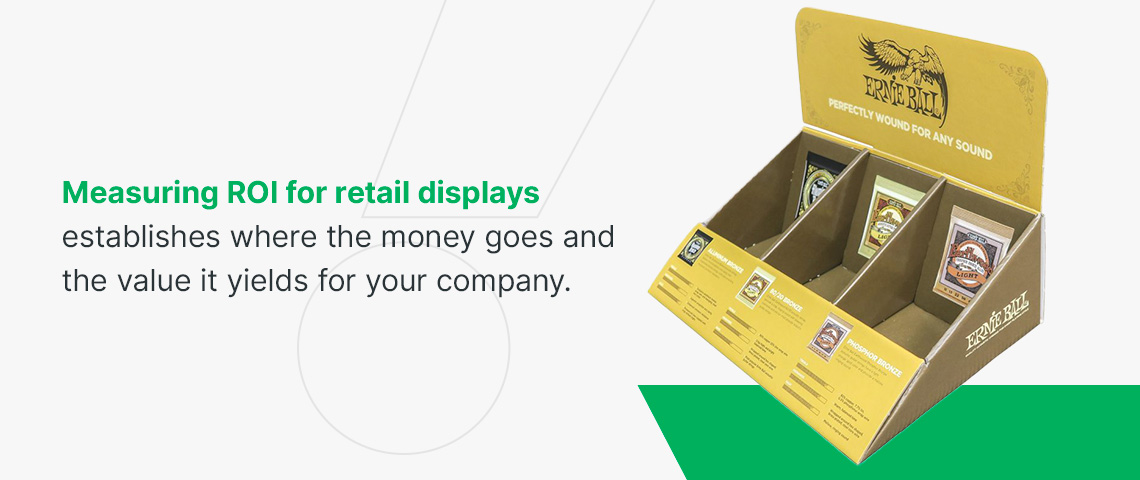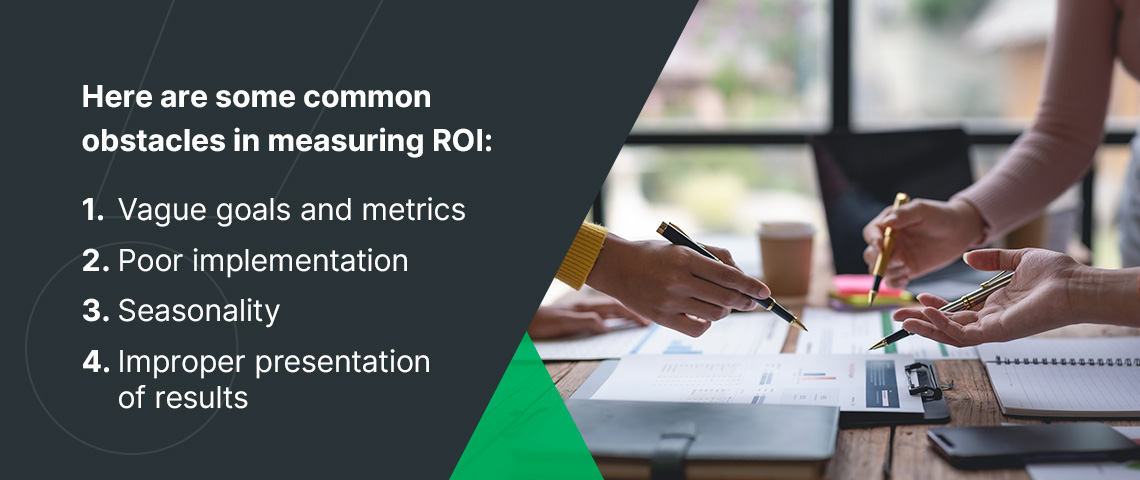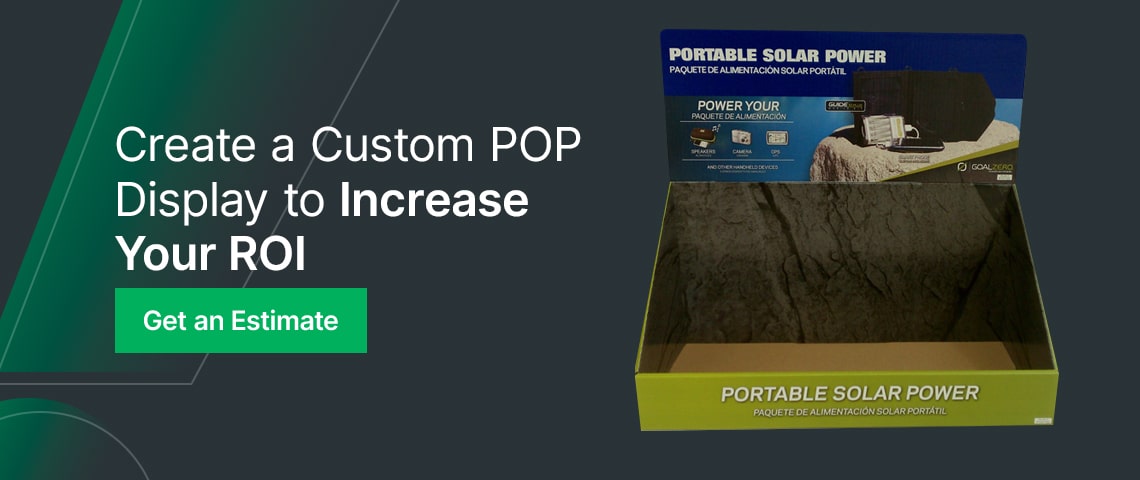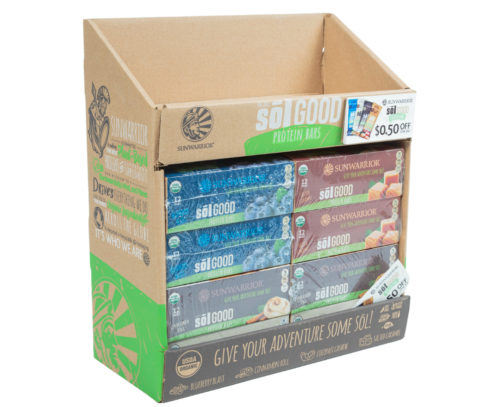Every marketer knows the importance of monitoring campaign results — evaluating the performance, impact and profit to determine if you’re getting your desired return on investment.
A customized retail display is always an excellent choice for promoting your service or product. Having measurable results helps you plan your marketing strategy because you know what works and what doesn’t. Learn more about measuring ROI for your custom displays.
What Is ROI?
In marketing, ROI compares the cost of marketing campaigns to the profit they generate. Businesses typically calculate ROI for the following reasons.
- Decide which direction to take: Metrics let you choose whether to adjust an underperforming campaign or keep things as-is if it generates plenty of revenue.
- Set your marketing budget: You need to calculate the ROI to determine the funding for the next round of campaigns. For instance, if point-of-purchase ads generate more profits than online ads, you may want to allocate more funds to POP advertising.
- Measure campaign success: Calculating your ROI lets you evaluate your campaign success, which helps you identify the right mix of online and offline advertising campaigns.
- Competitive analysis: When calculating your ROI, compare your performance to other companies in your industry. You can use publicly available financial data to estimate your competitors’ ROIs
Why Should You Measure In-Store Marketing Campaigns?
Brands across industries spend a substantial part of their budget on marketing campaigns. A primary example of this is Coca-Cola. According to Statista, the soft drink giant has spent approximately $4 billion annually on marketing their products between 2014 and 2022. And while the start of the COVID-19 pandemic in 2020 caused them to lower their budget, it still amounted to a generous $2.8 billion.
Does your brand use your marketing budget wisely? Measuring ROI for retail displays establishes where the money goes and the value it yields for your company.
Tracking ROI is more challenging for brick-and-mortar stores than their e-commerce counterparts. However, establishing sound assessment criteria removes the guesswork from the equation, ensuring more objective results and offering these strategic advantages.
- Justify market spend: Tracking your display retail program’s results reveals whether it meets the objectives. Sales achievements allow companies to warrant more generous marketing budgets in the future.
- Inform future campaigns: The insights you gain from your marketing campaigns lead to improved success strategies. For example, you can tweak your campaign if you discover some retail display designs outperform others.
- Team accountability: Measuring marketing campaign effectiveness provides an unbiased perspective on the branding team’s performance. Holding employees accountable increases motivation and promotes ownership.
How to Calculate Your Retail Display Program’s ROI
Here are the two steps for calculating ROI and measuring your displays’ performance.
- Determine your key performance indicators: Your KPIs are the goals you want to accomplish with your advertisement. They can be anything from increasing brand awareness to improving sales, but they must be specific. For instance, one KPI might be increasing profits by 25% at a particular retail location. The more detailed the goal is, the more easily you can determine your ROI and track progress.
- Do the math: You can use a few different formulas to calculate ROI. One way is to divide the profit by the total investment cost. For example, if you spent $1,500 on a campaign ad and earned $2,000 from sales, your profit was $500. Dividing $500 by $1,500 equals an ROI of 0.33, or 33%.
Key Factors to Consider When Determining Your ROI
A few other variables can affect your ROI.
- Campaign runtime: You must understand when you’ll see a return to set realistic expectations. If you run a multi-year campaign, you cannot accurately calculate its ROI until it ends.
- Total revenue: Consider the total campaign revenue when measuring ROI. Then, you can determine the budget, overall marketing impact and strategic planning.
- Gross margin ROI: The gross margin ROI considers the costs to keep it comparable to what you would gain if you turned it into cash. You can calculate the gross margin ROI by subtracting your annual sales revenue from your sales costs, then dividing that figure by your inventory value.
- Seasonal displays: If you use a seasonal POP display, comparing the benefits you receive when it’s active versus when you don’t use it helps you measure its performance.
- Sell-through rate: The sell-through rate is a percentage that compares the amount of inventory to what sells. To calculate the sell-through rate, divide your sales by the stock on hand and multiply it by 100. You can use this to compare marketing techniques, such as a customized display compared to no display.
- Gross profit: Gross profit helps you understand your marketing efforts’ total revenue and considers the cost of production or delivery. All you do is subtract that cost from your total revenue.
- Net profit: Your net profit is another way to assess marketing impact. Merely subtract additional expenses from your gross profit.
- New customers: Knowing how many new customers you’ve acquired shows your advertising campaign’s effectiveness. If you have many new customers, you may consider your marketing a success, depending on your goals.
Challenges When Measuring ROI of In-Store Marketing
As numerous variables impact your ROI, ensuring accurate results may be challenging. Here are some common obstacles in measuring ROI for retail displays and how to overcome them.
- Vague goals and metrics: It’s challenging to determine which metrics to measure when your campaign objectives are hazy. Start by identifying specific goals and clarifying how you will quantify your success. A defined strategy at the onset will help you record and analyze your data accurately.
- Poor implementation: Establishing marketing goals is half the battle — implementing them is a further challenge. Ensure the variables are constant across stores when measuring sales performance. For example, you’ll need to establish whether every store has enough displays and if there is sufficient stock to support your goals.
- Seasonality: Some products sell better at different times of the year. Factors driving demand include holidays, seasons and weather conditions. For example, hot chocolate sales will likely increase in winter. Stationery items will also sell better ahead of the new school year. Consider seasonality when you measure marketing impact and adjust your formulas for peak and non-peak times.
- Improper presentation of results: You’ll gain valuable data when measuring your marketing impact, but these figures alone are not enough to capture your campaign effectiveness. Solicit feedback from stakeholders and investors before defining your marketing report to ensure your presentation is concise and accurate.
Tips for Improving Your ROI
A decent ROI is any dollar amount that represents a profit once you subtract spending costs. Try using these eight tips if you’re dissatisfied with your ROI.
- Invest in POP displays: POP displays offer many benefits, including increasing brand awareness, granting your visibility in major retail stores, stronger merchandising, increasing product appeal and increasing sales
- Measure external factors: There’s more to your campaign than ROI. When establishing your marketing goals, you should also decide which external factors affect your ROI and how to measure them.
- Determine costs: Factor in how much you spend on creative development, agency fees and personnel so you can develop your ROI strategies and decide what metrics to include in your calculations.
- Try different marketing channels: Test various campaign channels to determine which ones work best. You can use email marketing, digital advertising, social media marketing and many other platforms.
- Survey your target audience: Asking people for feedback is the best way to learn what they want. By surveying consumers, you can get answers to your marketing questions and plan your strategy.
- Focus on your spending and income: You can analyze your spending at different campaign stages to see where you spend more than you gain.
- Experiment: Experimentation identifies growth opportunities and provides valuable insights. For instance, you can run two advertising campaigns and compare the results.
- Focus on your customer: Customers are more likely to purchase products when your marketing campaign resonates with them. You can make your efforts more relevant by putting your customers at the center of your marketing strategy and considering what advertisement would entice them to buy your product.
Create a Custom POP Display to Increase Your ROI
A custom POP display is an excellent way to increase and measure your ROI. Custom POP displays offer countless benefits, such as being affordable and appealing to customers.
Creative Displays Now has provided customers with high-quality custom displays for over 60 years. As a premier designer and manufacturer of POP displays, we produce various custom corrugated cardboard product displays under one roof. We’ve got your back from design to distribution. We’re experts in our industry and know national retailers’ display requirements. Contact us to get an estimate or discuss your custom display ideas.







